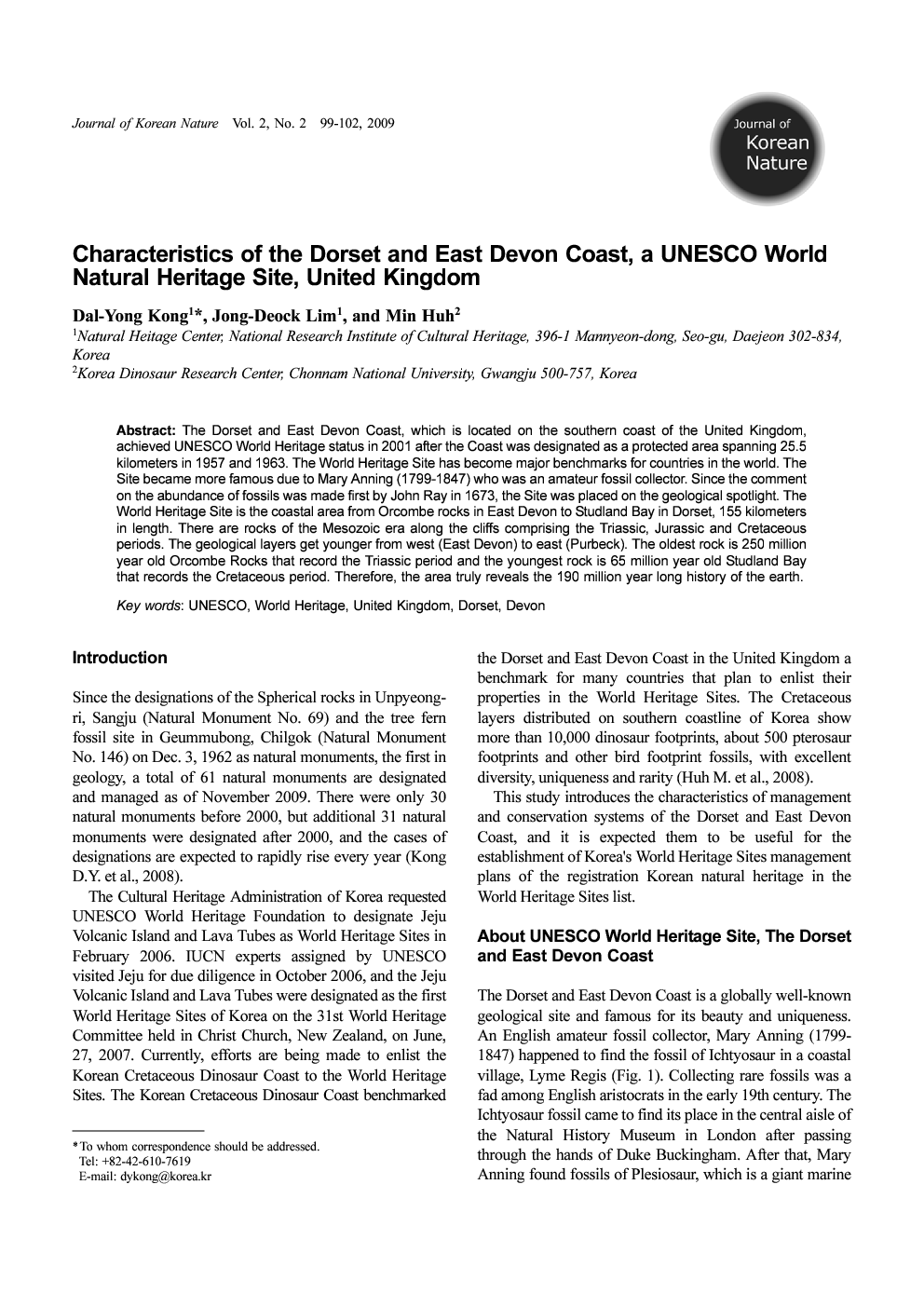| Article ID | Journal | Published Year | Pages | File Type |
|---|---|---|---|---|
| 4399585 | Journal of Korean Nature | 2009 | 4 Pages |
The Dorset and East Devon Coast, which is located on the southern coast of the United Kingdom, achieved UNESCO World Heritage status in 2001 after the Coast was designated as a protected area spanning 25.5 kilometers in 1957 and 1963. The World Heritage Site has become major benchmarks for countries in the world. The Site became more famous due to Mary Anning (1799-1847) who was an amateur fossil collector. Since the comment on the abundance of fossils was made first by John Ray in 1673, the Site was placed on the geological spotlight. The World Heritage Site is the coastal area from Orcombe rocks in East Devon to Studland Bay in Dorset, 155 kilometers in length. There are rocks of the Mesozoic era along the cliffs comprising the Triassic, Jurassic and Cretaceous periods. The geological layers get younger from west (East Devon) to east (Purbeck). The oldest rock is 250 million year old Orcombe Rocks that record the Triassic period and the youngest rock is 65 million year old Studland Bay that records the Cretaceous period. Therefore, the area truly reveals the 190 million year long history of the earth.
